 ARISU Integrated Information Center
ARISU Integrated Information Center

Overview
.jpg)
- Site Name: ARISU Integrated Information Center
- Establishment Year : 2011.12.18
- Location : 1st Floor Office of Waterworks, Seosomun-ro 51, Seodaemun-gu, Seoul
- Size: 260 square meters
- Organization : Seoul City Water Supply Project Headquarters
Purpose
- The improvement of real-time water management efficiency and monitoring of management information
- Optimization of boat operation management – Water systems and ARISU production
Facilities
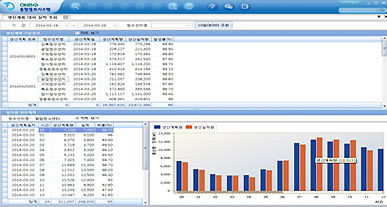 |
Production management system Advanced systems that scientifically predict tap water demand and schedules pump operation with efficient production from the digital center. The system analysis the operational data and historical drainage pattern of the time zones and scientifically assumes demands using weekly and seasonal information. Tap water production is based on the Japanese Meteorological Agency weather information as well as operator experience with regards to the state of water levels in the reservoirs in Jonsuji. Water pump operations are established every 72 hours at the digital center and every 48 and 24 hours in the predictive model. Production costs of tap water can converse enough energy that the savings are used to correct for productions and reduce even more waste. |
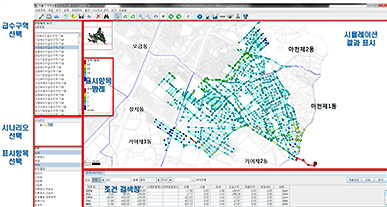 |
Power management system Resources are monitored in real-time from the main data center ranging from water quality, pressure, and quantity. The Management system also accounts for possible water leakages, traffic jams, and the overall water quality. The aim is to monitor and in some cases prevent accidents. Although it is inevitable that problems will occur, the monitoring system allows for real-time data to handle the situation and recover loses quickly. The management system was created using pipe diameters and Geographic Information Systems of real-time flow rate values. |
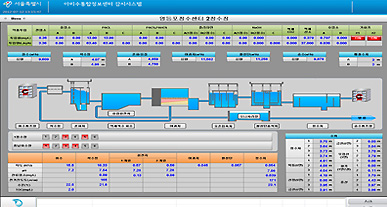 |
Remote monitoring system 6 digital centers are distributed to also operate a system of integrated monitoring to manage real-time information of 8 operational locations. Integrated DB data is collected and distributed at the request of any information center. The transfer of data allows for quality checks of the running water supply. The facility utilizes more 82,500 instruments to comparatively analyze statistical data. It was decided to use rapid support optimization for the water intake facility, water treatment plants, reservoirs, and the Gapujan Operation. This allowed for an efficient operational system supply as well as the possibility for more stable tap water production. |
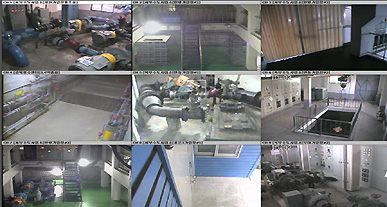 |
System of video surveillance The integer centers also is supervised by high quality real-time CCTV video information of all 690 units. The monitoring system doubles as a security system for the business offices were they are also installed. In cases of abnormalities, the operating system is capable of corresponding in real-time through visibility into the status of the situation as well as video conferencing to support quick decisions. |
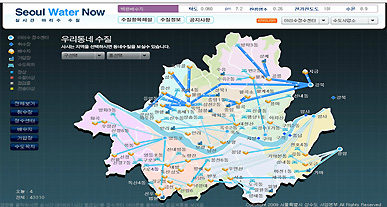 |
Water quality monitoring system The quality check system analyzes water samples to test for pH, turbidity, and residual chlorine. Water sample data is sent automatically from measuring instruments placed in the supply chain and production fields. Interim measurement instruments also are used to alert managers if levels fall below or exceed a reference value based on water quality standards. This measure is in place to prevent water accidents in advance by sending automated SMS to the manager in charge of the water facility by DB reductions to manage the water quality data and the possibility of scientific analysis. |
Effects
- By calculating the operational plan of the pump and production, the facility was able to reduce it manufacturing cost of quality tap water
- An increased responsiveness to water leakages and accidents resulting decreased inconveniences for citizens
- Opening the center for integration as allowed citizens to evaluate and improve the overall reliability of ARISU to the public